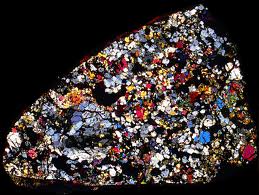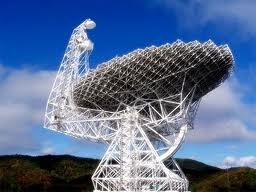

NASA Orbiter Reveals Buried Dry Ice Deposit on Mars
NASA’s Mars Reconnaissance Orbiter has discovered that the total amount of atmosphere on Mars changes dramatically as the tilt of the planet’s axis varies. This process can affect the stability of liquid water, if it exists on the Martian surface, and can increase the frequency and severity of Martian dust storms.
Researchers using the orbiter’s ground-penetrating radar identified a large buried deposit of frozen carbon dioxide, or dry ice, at the Red Planet’s south pole. The scientists suspect that much of this carbon dioxide enters the planet’s atmosphere and swells the atmosphere’s mass when Mars’ tilt increases. The findings were published last week in the journal Science.
The newly found deposit has a volume similar to that of Lake Superior—nearly 3,000 cubic miles. The deposit holds up to 80 percent as much carbon dioxide as does today’s Martian atmosphere. Collapse pits caused by dry ice sublimation and other clues suggest that the deposit is in a dissipating phase, adding gas to the atmosphere each year. Mars’ atmosphere is about 95 percent carbon dioxide, in contrast to Earth’s much thicker atmosphere, which contains mainly nitrogen and oxygen and less than 0.04 percent carbon dioxide.
“We already knew there is a small perennial cap of carbon-dioxide ice on top of the water ice there, but this buried deposit has about 30 times more dry ice than previously estimated,” said Roger Phillips of Southwest Research Institute in Boulder, Colo. Phillips is deputy team leader for the Mars Reconnaissance Orbiter’s Shallow Radar instrument and lead author of the report.
“We identified the deposit as dry ice by determining that the radar signature fitted the radio-wave transmission characteristics of frozen carbon dioxide far better than the characteristics of frozen water,” said Roberto Seu of Sapienza University of Rome, team leader for the Shallow Radar and a co-author of the new report. Additional evidence came from correlating the deposit to visible sublimation features typical of dry ice.
“When you include this buried deposit, Martian carbon dioxide right now is roughly half frozen and half in the atmosphere, but at other times it can be nearly all frozen or nearly all in the atmosphere,” Phillips said.
An increase in atmospheric density would strengthen winds, lofting more dust and leading to more frequent and more intense dust storms. Another result is an expanded area on the planet’s surface where liquid water could persist without boiling away. Modeling based on the known variations in the tilt of Mars’ axis suggests that several-fold changes in the total mass of the planet’s atmosphere can happen on time frames of 100,000 years or less.
The changes in atmospheric density caused by the carbon-dioxide increase also would amplify some effects of the changes caused by the tilt. Researchers plugged the mass of the buried carbon-dioxide deposit into climate models for the period when Mars’ tilt and orbital properties would maximize the amount of summer sunshine hitting the south pole. They found that at such times, Mars’ global average air pressure would be 75 percent greater than the current level.
You can contact Bob Eklund at [email protected].





Be the first to comment